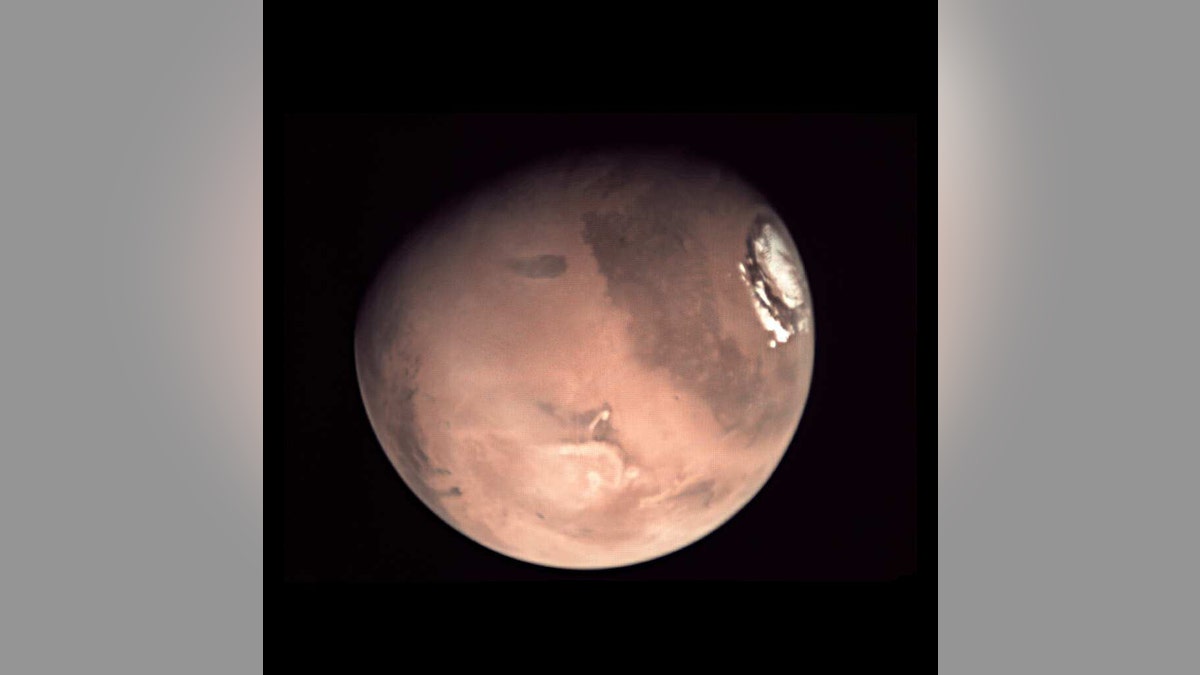
This is one of a series of images just released from the Mars Express, ESA’s deep-space probe orbiting the Red Planet. Now known as the Mars Webcam, it has provided a wealth of Mars images – including whole-planet views and images of the Mars crescent and limb. (ESA/D. O'Donnell - CC BY-SA IGO)
Mars got a dramatic facelift billions years ago, thanks to a volcanic eruption so large that it actually caused the Red Planet to tilt by as much as 25 degrees.
The findings are helping scientists better understand the early history of Mars, a time from 3 to 3.5 billion years ago when life may have emerged. The massive eruption from what is known as the Tharsis volcanic dome – the largest of its kind in the solar system – would also help explain why rivers formed where they are today as well as why underground reservoirs of water ice are located far from the poles of Mars.
Related: Mars in three days? NASA touts new propulsion system
Writing in the journal Nature, a team of mainly French scientists concluded that an eruption from Tharsis caused the outer layers of Mars – its crust and mantle – to rotate around the core. The idea of the outer layers shifting been predicted in theoretical models but never demonstrated.

An image of Mars shot from ESA's Mars Express. (ESA - European Space Agency,)
The Tharsis volcanic dome, the scientists wrote, began to form over 3.7 billion years ago and volcanic activity continued for several hundred million years. As a result, a massive plateau formed that exceeded 3,100 miles in diameter, with a thickness of about 7.5 miles and a mass of a billion billion tons – or 1/70th the mass of the Moon.
This mass was so huge that it caused Mars' crust and mantle to swivel around. As a result, the Tharsis dome shifted to the equator, corresponding to its new equilibrium position.
The findings would also shed light on the source of the river beds found on Mars.
Related: Mapping Mars: Digital landscape shows contours, legend
According to this new scenario, the period of liquid water stability that allowed the formation of river valleys most likely resulted from the volcanic activity of the Tharsis dome, the scientists wrote. Most rivers would have flowed from the cratered highlands of the southern hemisphere to the low plains of the northern hemisphere. Rain, ice and snow would have been commonplace during this time, they said.
“In light of our results, we conclude that precipitation occurred during the birth and growth of the Tharsis bulge rather than when its activity was declining,” they wrote in the Nature study. “Such a scenario is more plausible than the post-Tharsis formation of valley networks, considering early degassing and progressive depletion of volatiles in the mantle source. The calculated pre-Tharsis topographic map of Mars provides a framework within which to examine the first billion years of its geological history.”
